Closing day is the final step in the home buying process where all parties involved come together to complete the sale of a property. It can be an exciting and nerve-wracking experience for both buyers and sellers, as it marks the official transfer of ownership. We will provide you with a detailed overview of what to expect on closing day and how to prepare for this important milestone in your home-buying journey.
What Happens on Closing Day?
On closing day, all parties involved in the transaction will meet at a designated location, usually at the office of either the buyer’s or seller’s attorney or at a title company. The purpose of this meeting is to review and sign all necessary documents related to the sale of the property.
The following are some key steps that typically take place on closing day:
1. Final Walk-Through: Before signing any paperwork, buyers have the right to do one last walk-through of the property. This is done to ensure that there are no major changes or damages since their last visit and that all agreed-upon repairs have been completed by the seller.
2. Reviewing Documents: Once everyone is satisfied with the condition of the property, it’s time to get down to business. Buyers will be presented with a stack of documents that they need to carefully review and sign. These may include loan documents from their lender, title insurance forms, deed transfer documents, and more.
3. Payment: Buyers are required to bring a cashier’s check or wire transfer for the remaining balance of the purchase price, as well as any closing costs and fees. These payments are typically made directly to the closing agent or attorney.
4. Transfer of Ownership: After all documents have been signed and payments have been made, the deed and other legal documents will be transferred from the seller to the buyer. This officially marks the change in ownership.
5. Distribution of Funds: Once all paperwork has been completed, funds will be distributed accordingly. This includes paying off any outstanding loans on the property and distributing any remaining funds to the seller.
6. Closing Costs: Buyers will also be responsible for paying closing costs which can include appraisal fees, attorney fees, title search fees, and more. These costs are typically outlined in detail on the closing statement provided by the lender.
7. Keys and Possession: Once all documents have been signed and funds have been distributed, buyers will receive the keys to their new home! They can then take possession of their new property.
Overall, closing day is a crucial step in the home-buying process that requires attention to detail and careful preparation. It’s important for both buyers and sellers to come prepared with all necessary documents and payments to ensure a smooth transaction.
Pre-Closing Checklist: What to Do Before the Big Day
As the big day of closing draws near, it is important to make sure that all necessary tasks are completed and everything is in order. This pre-closing checklist will help you stay on track and ensure a smooth closing process.
1. Review the Purchase Agreement
The purchase agreement is a legally binding contract between you and the seller. It outlines all the terms and conditions of the sale, including the agreed-upon price, contingencies, and closing date. Before closing day, review this document carefully to make sure everything is accurate and as agreed upon.
2. Schedule a Final Walk-Through
One of the most crucial steps before closing is scheduling a final walk-through of the property. This lets you inspect the property one last time before signing on the dotted line. Ensure that any repairs or changes requested during negotiations have been completed satisfactorily.
3. Prepare Your Funds
Before closing day, you will need to prepare your funds for payment. This may include cash for down payment, closing costs, taxes, insurance premiums, etc. Talk to your lender or escrow agent beforehand to determine how much money you will need and what forms of payment are acceptable.
4. Get Homeowners Insurance
Homeowners insurance protects your home against damage or loss due to unforeseen circumstances such as natural disasters or accidents. It is important to secure homeowners insurance before closing day so that your property can be fully protected from day one.
5. Notify Utility Companies
Make arrangements with utility companies such as electricity, gas, water, and internet to transfer services into your name on closing day. This will ensure that you have uninterrupted service after moving into your new home.
6. Get a Cashier’s Check
Ask your lender or escrow agent if a cashier’s check is required for closing. If so, make arrangements to obtain one prior to closing day in the correct amount.
7. Review Closing Disclosure
The Closing Disclosure is a document provided by your lender that outlines all of the final terms of your loan, including interest rate, monthly payments, and closing costs. Review this document carefully before closing day to ensure everything is accurate.
8. Bring Required Documents
On closing day, be sure to bring any required documents such as government-issued ID, proof of insurance, and any additional documents requested by your lender or escrow agent.
9. Attend the Closing Appointment
Closing appointments typically take place at the office of the title company or attorney handling the closing process. Be sure to attend the appointment and bring all necessary documents and funds with you.
10. Sign All Documents
During the closing appointment, you will be required to sign numerous documents related to the purchase of your home. Read each document carefully before signing and ask any questions you may have.
Things to Bring on Closing Day
Closing day is the final step in the home-buying process and marks the official transfer of ownership from the seller to the buyer. This can be an exciting and nerve-wracking time, as there are many important tasks to complete before you can officially call yourself a homeowner. One crucial aspect of closing day preparation is making sure that you have everything you need for a smooth and successful closing. To help you stay organized, here is a detailed list of things to bring on closing day.
1. Government-issued ID: It’s essential to bring a valid government-issued photo identification such as a driver’s license, passport, or state ID card on closing day. This will be needed for identity verification purposes during the signing of legal documents.
2. Proof of homeowners insurance: Before finalizing your mortgage loan, your lender will require proof of homeowners insurance coverage. Make sure to bring along this documentation to avoid any last-minute delays.
3. Certified or cashier’s check: Most likely, you will need to bring a certified or cashier’s check for the down payment and closing costs unless you’ve made other arrangements with your lender beforehand.
4. Your checkbook: While some fees may have been paid in advance or rolled into your loan amount, it’s always wise to have your checkbook handy for any unexpected expenses that may arise on closing day.
5. Purchase contract and addendums: You should also bring all copies of the purchase agreement and any addendums that were agreed upon between parties during the negotiation process.
6. Closing disclosure and loan estimate: These are two documents that your lender is required to provide you with at least three days before closing. Make sure to bring them with you for comparison purposes and to ensure there are no last-minute changes.
What to Expect on Closing Day
Closing day is the final step in the home-buying process and marks the moment when you officially become a homeowner. It is an exciting and nerve-wracking time, as it involves a lot of paperwork, signatures, and financial transactions. We will go over what to expect on closing day so that you can be well-prepared and make the most out of this momentous occasion.
1. Final Walk-Through:
Before heading to the closing table, you will have one last chance to do a final walk-through of the property. This is your opportunity to ensure that everything is in the same condition as when you first saw it and that any agreed-upon repairs or changes have been made. If there are any issues, make sure to address them before proceeding with the closing.
2. Closing Disclosure:
The Closing Disclosure (CD) is a document that outlines all of the final terms of your mortgage loan. It includes important details such as interest rates, monthly payments, closing costs, and any other fees associated with your loan. You should review this document carefully and compare it to your Loan Estimate (LE) to ensure there are no discrepancies.
3. Required Documents:
On closing day, you will need to bring certain documents with you such as a government-issued ID, proof of homeowner’s insurance, and any other documents requested by your lender or real estate agent. Make sure to have these documents readily available beforehand to avoid delays during the closing process.
Tips for a Smooth Closing Process
The closing process is the final step in purchasing a home and can often feel overwhelming for first-time buyers. However, with proper preparation and organization, it can be a smooth and stress-free experience. Here are some tips to help you navigate through the closing process with ease.
1. Review all documents beforehand: Before the closing day, your real estate agent or attorney will provide you with a stack of documents to review and sign. It’s important to carefully read through each document and ask any questions you may have. This will ensure that everything is accurate and in line with what was agreed upon during negotiations.
2. Get a pre-closing walkthrough: A pre-closing walkthrough allows you to inspect the property one last time before signing on the dotted line. Make sure to check that all repairs and agreed-upon changes have been made by the seller. This is also a good opportunity to test all appliances, lights, faucets, etc., to ensure they are in working condition.
3. Have all necessary funds ready: Closing costs can add up quickly, so make sure you have enough funds available for payment on closing day. These costs typically include lender fees, appraisal fees, title insurance fees, and homeowners insurance premiums, among others. Be sure to discuss these costs with your lender beforehand so there are no surprises on closing day.
Post-Closing Checklist: What to Do After the Closing is Complete
Once the closing is complete and all necessary documents have been signed, it may feel like a huge weight has been lifted off your shoulders. However, there are still a few important things to take care of before you can fully celebrate becoming a homeowner. This post-closing checklist will guide you through the steps you must take after the closing.
1. Review Your Closing Documents: It’s crucial to thoroughly review all of your closing documents, including the purchase agreement, settlement statement, and mortgage note. Make sure everything looks accurate and matches what you agreed upon during negotiations. If you notice any discrepancies or have questions, don’t hesitate to reach out to your real estate agent or attorney for clarification.
2. Get in Touch with Your Insurance Provider: Now that you officially own the property, it’s time to make sure it’s properly insured. Contact your insurance provider and update them on the new ownership status so they can adjust your coverage accordingly. You may also want to consider getting additional insurance such as flood or earthquake coverage if applicable.
3. Change Your Locks: For security reasons, it’s always recommended to change the locks on your new home after closing. You never know who may still have keys from previous owners or contractors who worked on the property before it was sold.
4. Set Up Utilities: Before moving into your new home, make sure all necessary utilities are set up in your name. This includes electricity, gas, water, internet/cable services, and any other essential utilities for your new home. You don’t want to be without heat or electricity on your first night in your new home.
5. Update Your Address: Don’t forget to update your address with the post office, bank, credit card companies, and any other important accounts. This will ensure that you receive all of your mail and bills at your new address.
6. Keep Track of Important Documents: Make sure to keep all of your closing documents in a safe place for future reference. These may include the purchase agreement, settlement statement, mortgage note, inspection reports, and title insurance policy.
Conclusion
Closing day can be an exciting but overwhelming experience for homebuyers. By following this checklist and preparing in advance, you can ensure a smooth and stress-free closing process. From organizing your documents to conducting a final walkthrough of the property, these steps will help you feel prepared and confident on closing day. Congratulations on becoming a homeowner, now go enjoy your new space!









 Can I ask you a question? Do you know how to become a successful real estate agent? If you do, what’s stopping you from making it to the Real Trends 1000 this year?
How you answered my question will have a huge impact on whether 2024 is going to be a boom year for you or another bust.
What do I know that you don’t?
Can I ask you a question? Do you know how to become a successful real estate agent? If you do, what’s stopping you from making it to the Real Trends 1000 this year?
How you answered my question will have a huge impact on whether 2024 is going to be a boom year for you or another bust.
What do I know that you don’t?



